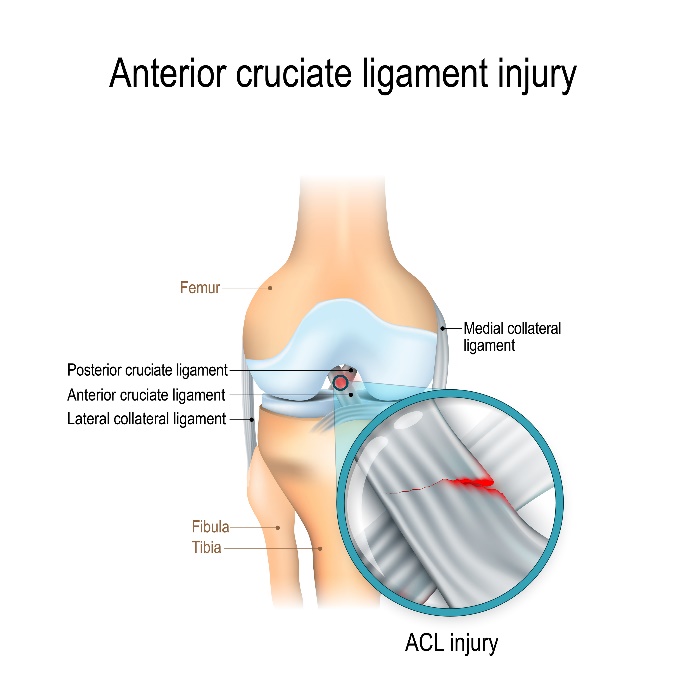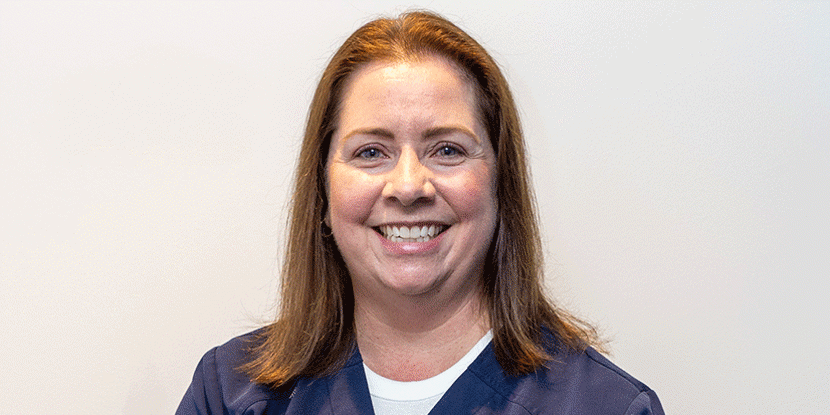Treating ACL Injuries in Female Athletes
- Category: Sports Medicine
- Posted On:
- Written By: Myra Trivellas, MD
Myra Trivellas, MD is an orthopedic sports medicine surgeon with Hoag Orthopedic Institute. She played Division 1 lacrosse during her undergraduate education and continued her involvement in sports throughout medical school and residency. Dr. Trivellas’ education, experience and research on female athletes and injuries gives her an in-depth perspective on how to treat sports injuries that we are excited to share with you.
This is part one of a series on Common Injuries in Female Athletes and How to Treat Them:
ACL Injuries in Female Athletes
 One of the most common injuries in female athletes is an Anterior Cruicate Ligament (ACL) tear. This is a tear of central ligament inside the knee joint. The ACL helps to hold your femur, the thigh bone, to your tibia, the main lower leg bone. This ligament is responsible for providing stability of the knee during cutting, pivoting, and jumping sports.
One of the most common injuries in female athletes is an Anterior Cruicate Ligament (ACL) tear. This is a tear of central ligament inside the knee joint. The ACL helps to hold your femur, the thigh bone, to your tibia, the main lower leg bone. This ligament is responsible for providing stability of the knee during cutting, pivoting, and jumping sports.
ACL tears are acute injuries, meaning they happen suddenly and without knowledge that it may happen. The most common way to hurt your ACL is by jumping and landing incorrectly, running and changing direction or stopping quickly, or by direct contact. Female athletes are at a higher risk of ACL tears due to several factors including landing mechanics (positioning and alignment of their body), hormones & the size and shape of the femur bone. Injuries often occur when the athlete’s muscles become fatigued and proper landing mechanics are lost.
Unfortunately, the ACL does not heal on its own. An athlete who wishes to return to sports will require surgery to reconstruct their ACL. Reconstruction is usually done with a graft from the patient's own tissues or in athletes over the age of 35, a donor tissue can be considered. Extensive physical therapy is also required after the surgery to regain strength and return to sports.
Everyone, not just athletes, can benefit from a regimen of strengthening and stretching exercises to keep their muscles balanced, strong, and flexible to protect from injuries. Yoga, Pilates, and physical therapy exercises are excellent to direct these preventative measures.
Strengthening core muscle groups such as hip abductors, core/abdominal muscles, quadriceps (specifically the inner quad, VMO), and muscles supporting the ankle will improve the athlete’s overall stability and significantly protect against injuries. Flexibility in your hips and lower back is also important.
Since ACL injuries can occur from improper mechanics and muscle fatigue, there is a possibility of prevention by implementing ACL injury prevention programs. An exciting injury prevention program developed by FIFA, called FIFA 11+, provides an exercise guide for athletes that has been shown to significantly lower the risk of ACL tears in soccer players.
https://www.youtube.com/watch?v=RSJIp7e7fyY&list=PLCGIzmTE4d0jJ8nngB9Szd8uWwuEPD4QD
Seeing a primary care physician with a specialty in sports medicine is a good idea if an injury does not improve within 1-2 weeks with standard treatment such as R.I.C.E.
If the athlete has pain with weight bearing or if there is swelling in their joints that does not resolve in 5 days, they should see their doctor and have imaging ordered.
If you think you may have an ACL tear, athletic trainers or physical therapists can be incredibly helpful in guiding athletes when to see an orthopedic surgeon.
